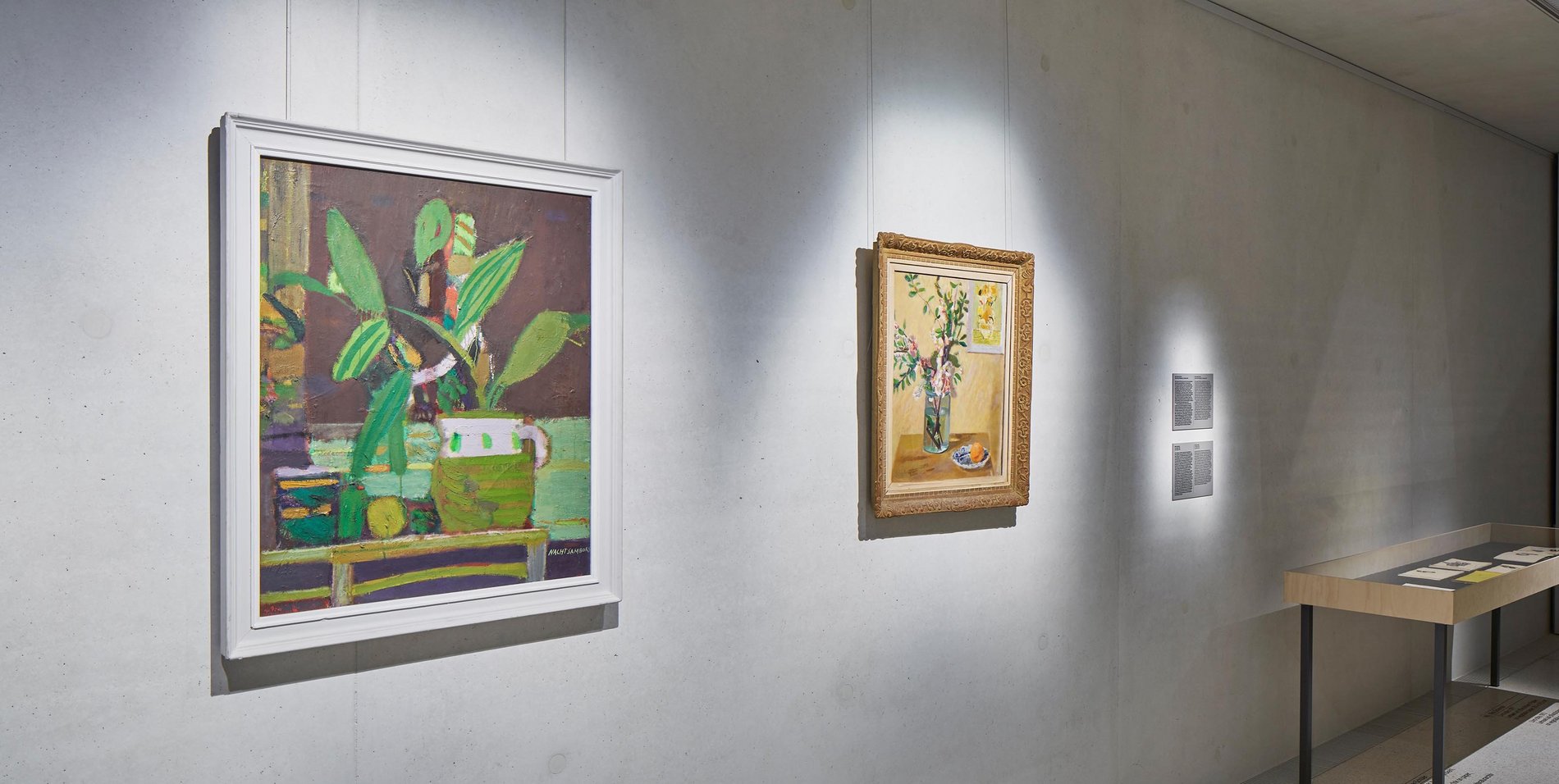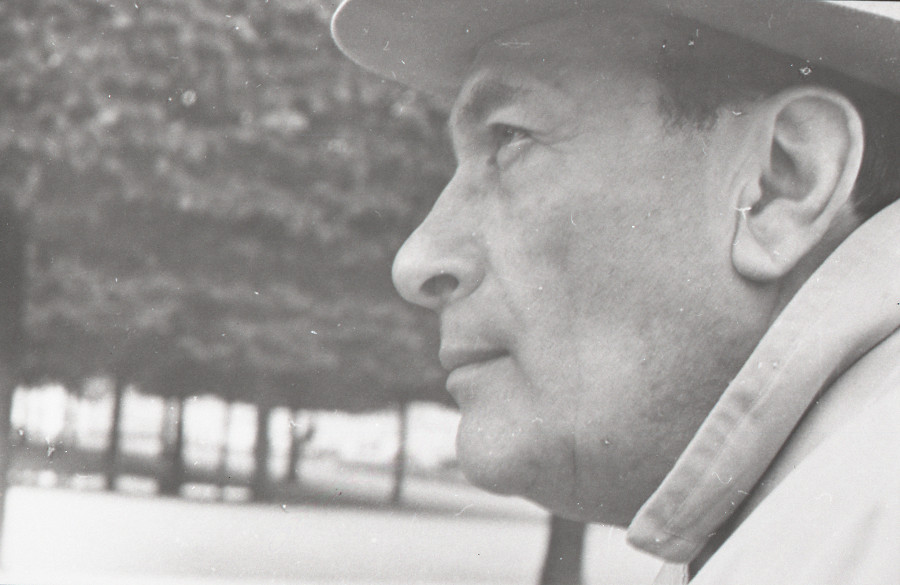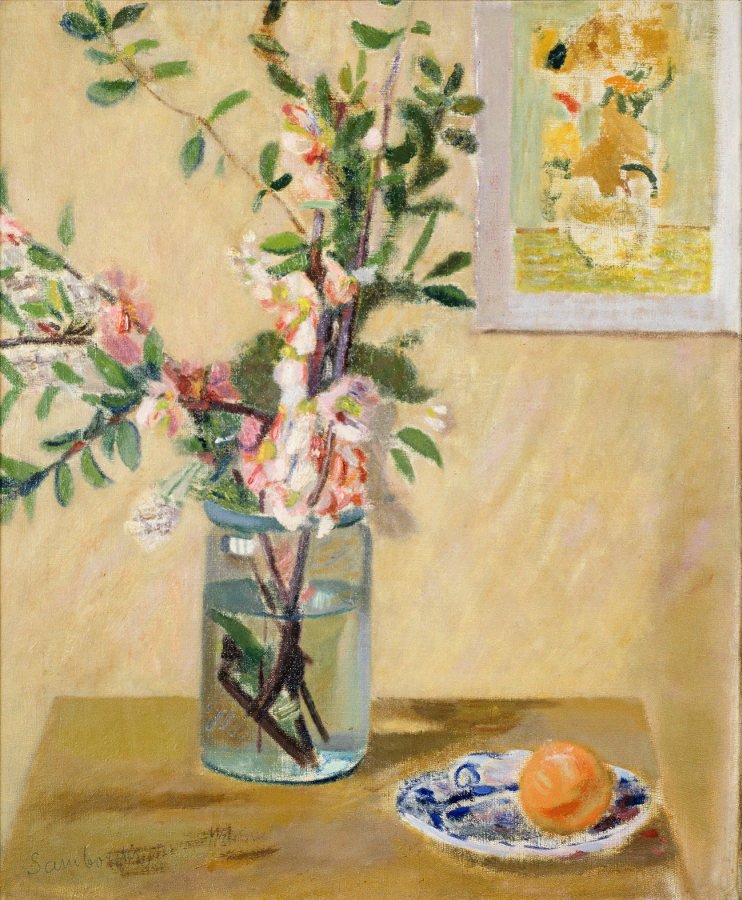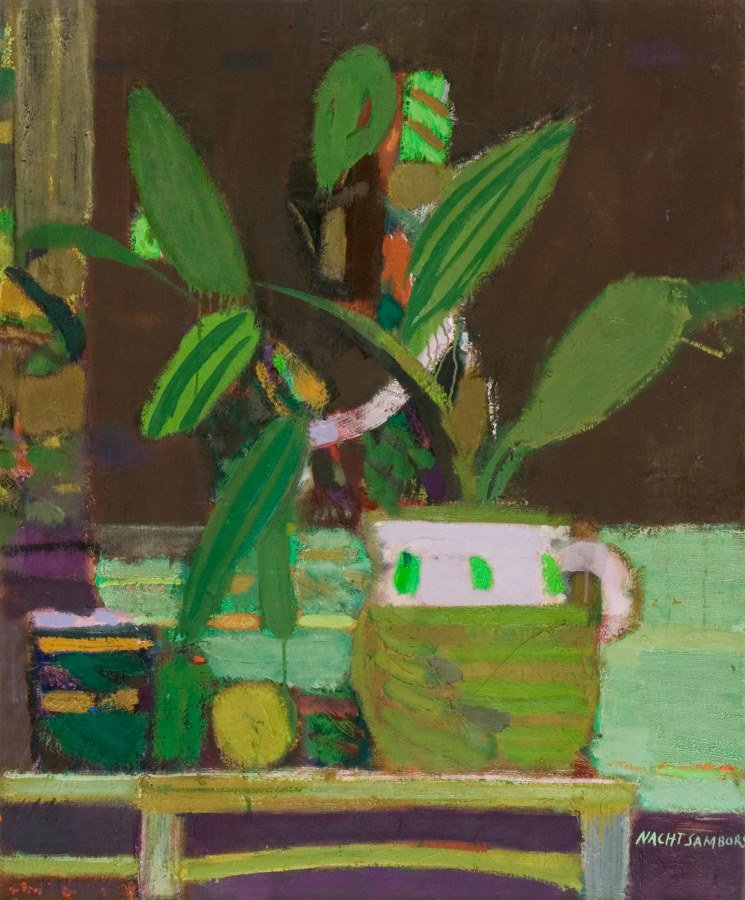Martwa Natura z Kwiatami w Wazonie (Still Life with Flowers in a Vase), 1950
Oil on canvas, 61 x 50 cm
Martwa Natura (Dzban Liliowy) (Still life [Lilly Vase]), undated
Oil on canvas, 84.5 x 70 cm
These two paintings by Artur (Stefan) Nacht-Samborski are still lifes of flowers in the style known as Polish Kapism, a defining trend in Polish painting in the 1930s and 1940s. Major artistic impetus came from the Paris Committee, a group of artists from the Academy of Fine Arts in Krakow who wanted to break with the tradition of Romantic art. Born as Artur Nacht the Jewish artist was among those who moved to Paris with the group in 1924. He returned to Poland in 1939. Under German occupation, he was deported to the Lwów Ghetto in 1941 before finally escaping to Krakow and later to Warsaw. He assumed a new name, Stefan Samborski, and survived the rest of the war with the help of this false identity. After the war, he continued to use this alias together with his original name. Nacht-Samborski’s story presents the unusual fate of a Jewish intellectual who was only able to save himself from Nazi persecution by creating a new identity. His works from the post-war period testify to the break within his artistic development and the individual attempt to take up previous progressions





